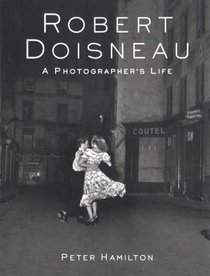Search -
Robert Doisneau: A Photographer's Life
Robert Doisneau A Photographer's Life
Author:
The first authorized biography available, Robert Doisneau provides an intimate and rich account of the life of the French photographer who captured the streets and elusive spaces of Paris as the city entered the modern era. Perhaps best known as the creator of romantic images of Paris-particularly The Kiss (Le Baiser de l'Hôtel de Ville)-Do... more »
Author:
The first authorized biography available, Robert Doisneau provides an intimate and rich account of the life of the French photographer who captured the streets and elusive spaces of Paris as the city entered the modern era. Perhaps best known as the creator of romantic images of Paris-particularly The Kiss (Le Baiser de l'Hôtel de Ville)-Do... more »
ISBN-13: 9780789200204
ISBN-10: 0789200201
Publication Date: 9/1995
Pages: 384
Rating: ?
ISBN-10: 0789200201
Publication Date: 9/1995
Pages: 384
Rating: ?
0 stars, based on 0 rating
Genres:
- Arts & Photography >> Individual Artists >> ( D-F ) >> Doisneau, Robert
- Arts & Photography >> Photography & Video >> Photographers, A-Z >> General
- Biographies & Memoirs >> Arts & Literature >> Artists, Architects & Photographers
- Biographies & Memoirs >> General




